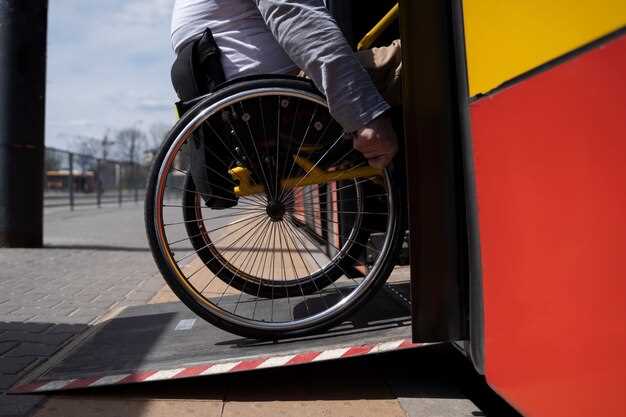
Cornering stability is a critical aspect of motorcycle performance, influencing both safety and rider confidence on the road. The bicycle’s front fork plays a pivotal role in maintaining balance and responsiveness during turns. Proper modifications can significantly enhance this stability, allowing riders to navigate corners with greater ease and control.
One of the primary methods for improving cornering stability is through the adjustment of fork geometry. This involves changing parameters such as axle height, rake, and trail, which collectively affect the handling characteristics of the bike. By experimenting with these factors, riders can customize their setup to suit specific riding styles or conditions, from aggressive sport riding to more casual cruising.
In addition to geometry changes, upgrading fork components, such as springs and dampers, can further enhance stability. Stiffer springs can provide better support during cornering, reducing the risk of bottoming out, while improved dampers can offer better control over fork movement, enhancing tracking and feedback from the front wheel. These modifications not only improve performance but also contribute to a more enjoyable riding experience.
Adjusting Fork Geometry for Improved Handling
Optimizing fork geometry is crucial for enhancing cornering stability and overall handling of a motorcycle. The primary aspects to consider include fork rake, trail, and offset, each playing a significant role in how a bike responds during maneuvers.
Rake refers to the angle between the steering axis and the vertical line. Increasing the rake generally improves straight-line stability but can lead to slower steering response. Conversely, reducing rake creates a sharper steering feel, which may be advantageous for track riding. Adjusting the rake involves changing the length of the forks or altering the steering head angle, requiring precision to maintain balance between stability and agility.
Trail is the distance from the point where the front wheel contacts the ground to the intersection of the steering axis and the ground. A longer trail typically enhances directional stability, making the bike less prone to wobbling at high speeds. However, excessive trail can hinder cornering ability. To achieve the desired trail, modifications can include raising or lowering the forks in the triple clamp, which can affect both the ride height and handling characteristics.
Offset refers to the distance between the steering axis and the fork legs’ mounting point. Adjusting the offset can influence both steering feel and stability. A smaller offset increases responsiveness but may compromise stability, particularly in high-speed cornering. Conversely, a larger offset can enhance stability but may slow down steering input. Forks with adjustable offset options allow for fine-tuning to tailor handling characteristics based on riding style and conditions.
In practical terms, riders can experiment with these geometrical adjustments by swapping out components like fork clamps, using adjustable spacers, or changing the fork tubes. It is essential to conduct thorough testing after any modifications to assess handling changes accurately. In addition, the overall setup should be in harmony with the rear suspension to ensure balanced performance across various riding scenarios.
Ultimately, careful consideration and adjustment of fork geometry serve to enhance cornering stability, allowing riders to achieve a more controlled and confident experience on the road or track.
Upgrading Suspension Components for Optimal Grip

Enhancing grip during cornering requires a comprehensive approach to suspension tuning. Upgrading key suspension components can significantly improve the vehicle’s handling characteristics and stability. Focus on the following areas for optimal results:
1. Shocks and Struts: Replacing factory shocks and struts with high-performance options allows for better damping control. Adjustable dampers enable tuning for different driving conditions, helping to maintain tire contact with the road. Look for components that offer both compression and rebound adjustments to fine-tune responsiveness.
2. Springs: Upgrading to stiffer springs can reduce body roll and improve cornering stability. Coil springs with a higher spring rate help maintain optimal ride height during aggressive maneuvers. Additionally, consider adjustable springs to accommodate varying load conditions and driving styles.
3. Anti-Roll Bars: Upgrading to larger anti-roll bars can enhance lateral stability by minimizing body movement during cornering. A stiffer bar decreases the amount of lean, allowing for quicker response to steering inputs and providing a more connected feel to the road. Ensure the balance between front and rear bars is maintained to avoid understeer or oversteer.
4. Bushings: Replacing factory rubber bushings with polyurethane or solid options improves the precision of suspension movements. These materials reduce flex, providing a more direct connection between the chassis and wheel assembly. As a result, handling becomes sharper, and tire feedback improves, contributing to better grip.
5. Camber Plates: Installing adjustable camber plates allows for precise tuning of wheel alignment. This adjustment optimizes tire contact during cornering, enhancing grip by maximizing the effective tire patch. A negative camber setting increases cornering forces but requires careful balancing to maintain straight-line stability.
By strategically upgrading these suspension components, drivers can achieve a more stable and responsive vehicle setup. Each modification contributes to improved grip, allowing for greater confidence and performance during cornering maneuvers.
Tuning Fork Spring Rates to Match Riding Style

Adjusting fork spring rates is a crucial aspect of motorcycle tuning that can significantly enhance cornering stability. The right spring rate tailored to a rider’s specific style can improve overall handling and comfort, leading to a more efficient and enjoyable riding experience.
Each rider has a unique approach to cornering, influenced by factors such as weight, experience level, and personal preference. Therefore, selecting the appropriate spring rate demands an understanding of these variables. For aggressive riders who favor hard braking and quick transitions, stiffer springs may provide the necessary support to maintain stability during high-speed cornering. Conversely, riders who prefer a more laid-back, cruising style might benefit from softer springs that deliver a smoother ride and better absorption of road imperfections.
To determine the ideal spring rate, riders should start by assessing their weight and the weight distribution of their motorcycle. This can be done using a sag measurement technique, which involves adjusting the preload on the springs and measuring the bike’s compression when the rider is seated. The target sag typically ranges from 30% to 35% of the total travel for sport-oriented setups, while touring or more casual riding may require softer settings with higher sag percentages.
Testing and fine-tuning are critical components in this process. Riders should conduct test rides after any spring adjustments to evaluate how the motorcycle responds in various scenarios, especially during cornering. Adjustments may involve changing the spring preload or replacing the springs entirely for significant shifts in behavior. It’s also valuable to take feedback from the bike’s handling and make incremental changes to achieve the desired performance.
In addition to rider weight and style, terrain types also play a role in spring rate choice. For instance, a rider who frequently navigates rough roads may lean towards springs that provide additional compliance, enhancing the bike’s ability to absorb bumps without compromising cornering stability. On the other hand, those tackling smoother racetracks may choose stiffer setups to enhance precision and responsiveness.
Ultimately, fine-tuning fork spring rates to complement a rider’s style not only improves cornering stability but also increases the overall safety and enjoyment of handling the motorcycle. By carefully considering these variables and consistently testing and adjusting, riders can achieve a harmonious balance between comfort and performance, tailoring their setup to fully realize their riding potential.
